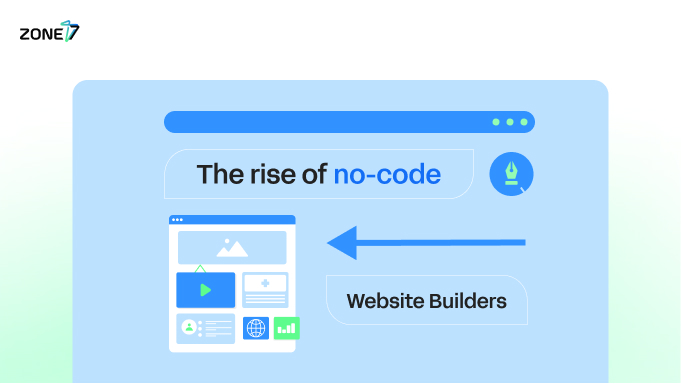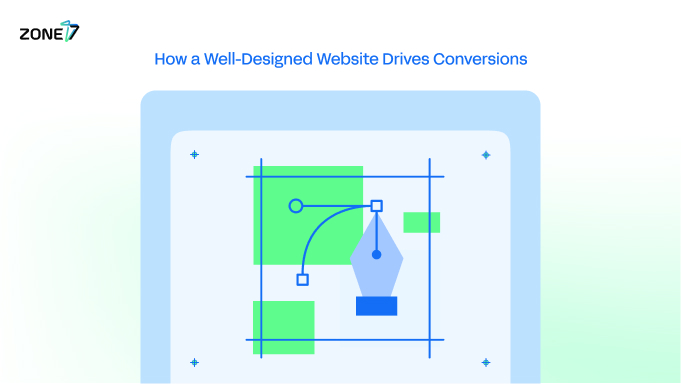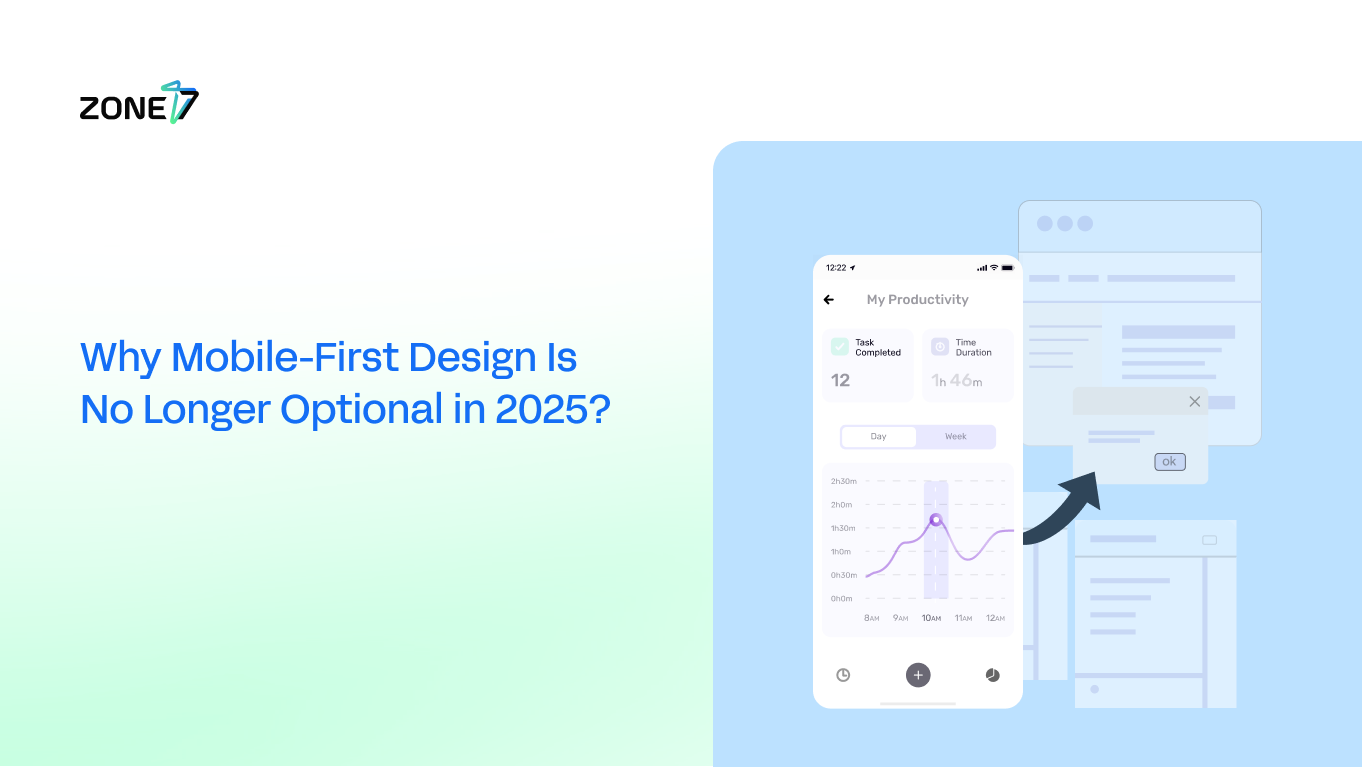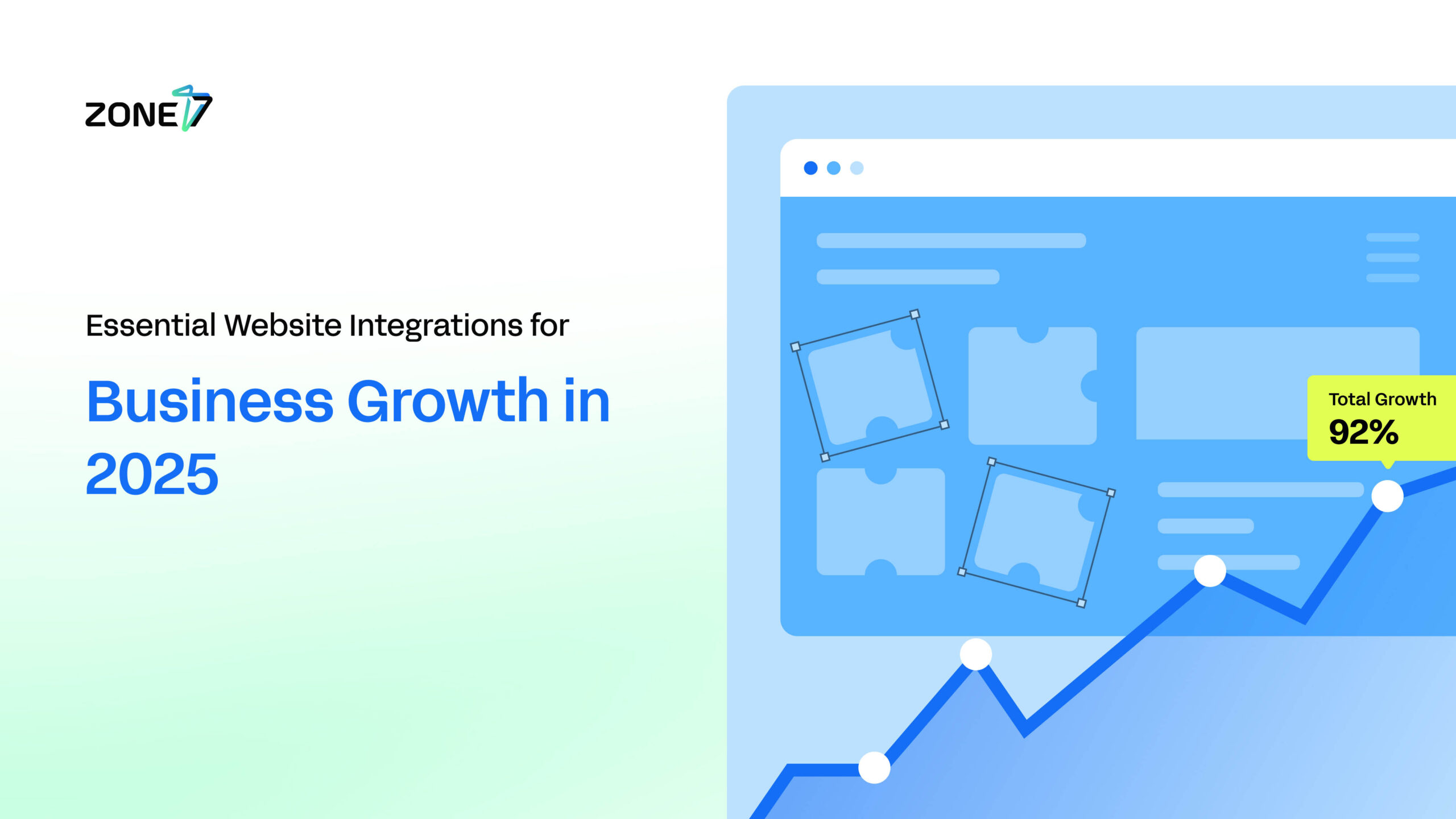Establishing a robust online presence is no longer a luxury for businesses; it has become a fundamental necessity. Whether showcasing products, providing services, engaging with customers, or driving sales, a well-crafted website serves as a digital storefront / a brand face.
Traditionally, the very thought of building a professional website has evoked images of coding, complex technical jargon, and substantial development costs.
However, the World Wide Web has undergone a profound technological shift with no-code website builders.
Such platforms have drastically simplified website creation, making it more accessible to virtually anyone. This widespread accessibility of no-code platforms like WordPress, WIX Joomla, etc. has made websites for every niche and business more prolific.
As the popularity of no-code solutions continues to surge, a question comes up again and again for every business owner: Is a no-code website builder the right path for you?
What Exactly Are No-Code Website Builders?
At its core, a no-code website builder is a framework software designed to create fully functional websites within predefined parameters—without requiring the user to write any code. These platforms empower individuals with little to no technical background to design, customize, and launch websites through simple easy to follow visual interfaces, often using drag-and-drop tools and prebuilt templates.
The roots of no-code web development goes back to the late 1990s and early 2000s with programs like Microsoft FrontPage and Adobe Dreamweaver. While those tools still required some understanding of HTML and CSS, they introduced the concept of visual editing (Visual Builders).
The true “no-code” concept accelerated in the 2000s with the rise of platforms like WordPress, Wix, etc.
No-code website builders have democratized web development, allowing anyone—from small business owners to content creators—to establish a professional online presence quickly and affordably.
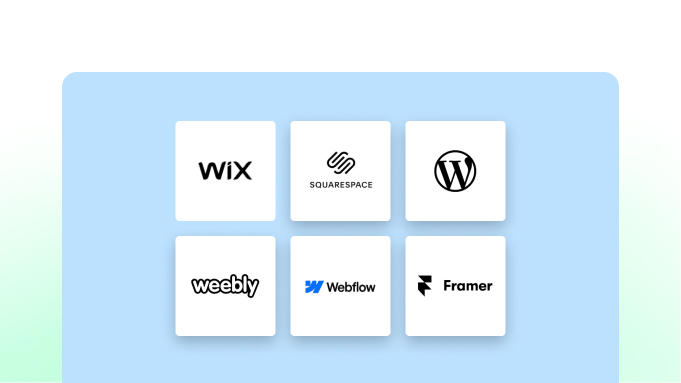
Best No-Code Website Builders in the Market
Here are some of the most popular and highly-regarded no-code website builders:
Wix:
Known for its user-friendly interface and extensive template library, Wix is a popular choice for beginners and small businesses. It offers a simple drag-and-drop editor, built-in SEO tools, and an App Market for added functionalities, making it affordable and easy to use.
Squarespace:
A favorite among creative professionals, Squarespace is renowned for its builder and sophisticated templates. It excels at building functionality driven, appealing websites with extensive design customization options, offering as an all-in-one platform with strong analytics and e-commerce tools.
WordPress (with page builders like Elementor, Divi, or Bakery Builder):
As an open-source Content Management System (CMS), WordPress powers a significant part of the internet, with over 40% of all websites current live on the internet.
When combined with no-code page builders (plugins), it offers a flexible solution for easy content management and extensive customization through a large ecosystem of themes and plugins created by the WordPress community. It is highly customizable, open-source, and free to use, though add-ons may incur costs.
Webflow:
Considered a top no-code builder, Webflow provides a simple visual design interface that allows for great design freedom and customization, similar to writing code from scratch. It includes a built-in CMS, complex animations, offers e-commerce functionality, and robust SEO tools.
Framer:
Ideal for interactive and design-heavy websites, Framer offers exceptional design tools, interactive elements, and AI-powered features. It’s best suited for designers who need high-fidelity prototypes and visually stunning web projects.
Weebly:
Recognized for its simplicity and ease of use, Weebly is a straightforward option for individuals and small businesses looking to create professional websites quickly.
These platforms represent the forefront of the no-code movement, each offering distinct advantages that cater to a wide spectrum of users and project requirements.

Key Advantages of No-Code Solutions for Businesses
No-code website builders offer a compelling array of benefits that make them an attractive option for many businesses looking to establish their online presence.
Time Savings:
No-code dramatically speeds up development (MVPs in weeks!). Faster deployment enables quicker validation, iteration, and improvements, offering a significant competitive edge and time savings.
Significant Cost-Effectiveness:
No-code cuts costs by reducing the need for expensive tech talent and shortening development cycles. Maintenance on these platforms are also much lower. However, consider total cost over time.
Empowerment for Every Team Member:
Easy to train team members on such platforms within a short period of time.
Built-in Essentials for Performance and SEO:
Many no-code builders include user-friendly SEO tools, mobile responsiveness, and performance optimizations (image compression, CDNs, caching), offering benefits without requiring deep technical knowledge.
Hidden Limitations of No-Code Websites
Customization Constraints:
No-code’s simplicity (pre-built modules) limits unique design and specialized features (complex animations, 3D). Achieving a distinctive brand can be hard with templates, leading to generic-looking sites. But some website builders do have 3rd-party development companies that do bring additional features in the form of add-ons like WordPress, WIX, Shopify, etc.
Scalability Concerns:
Despite claims, no-code can struggle with high traffic, complex functions, or advanced AI. Large platforms (Netflix, Uber) use custom code. Growing businesses may outgrow no-code, needing costly re-platforming.
Performance Trade-offs:
No-code can create “bloated code” (unnecessary scripts) slowing load times, hurting UX and SEO. Users lack direct code access for optimization (“hidden technical debt”).
Security and Control Limitations:
No-code often limits control over security and data ownership, unsuitable for sensitive data (finance, healthcare compliance). “Vendor lock-in” is a risk if the platform changes or fails, making migration hard.
Website Performance: Why Every Millisecond Counts
Nowadays, speed isn’t just a luxury; it’s a fundamental driver of user experience, search engine rankings, and ultimately, business success. Even fractions of a second can make a significant difference to your bottom line.
First Impressions are Formed in Milliseconds:
Visitor form impression about a website in as little as 50 milliseconds. A fast-loading site immediately conveys professionalism, reliability, and competence, setting a positive stage for user interaction.
Impact on User Experience and Bounce Rate:
Slow load times are a major source of visitor frustration, leading to high bounce rates—the percentage of visitors who leave after viewing only one page. Research shows that the probability of a user bouncing increases by 90% when page load time goes from one second to five seconds. A staggering 53% of mobile visitors will abandon a website if it takes more than three seconds to load.
Conversions are Directly Affected:
Faster websites reduce “friction” in the visitor journey, making it easier for customers to complete actions like purchases or form submissions. Even a marginal improvement can yield substantial results: a mere 0.1-second improvement in load time can increase e-commerce conversions by 8.4% and travel conversions by 10.1%.
SEO Rankings and Visibility:
Search engines have confirmed that site speed is a direct ranking factor. Search engines prioritize fast-loading, mobile-friendly websites, and poor performance can lead to lower rankings, less organic traffic, and fewer leads.
The interconnectedness of website performance metrics and business outcomes cannot be overstated. A slow server response (TTFB) directly delays the first content paint (FCP), which then impacts when the main content loads (LCP) and how quickly the page becomes interactive (INP).
These technical metrics collectively shape user satisfaction, which in turn dictates bounce rates, time on site, and ultimately, conversion rates and search engine visibility. This means that optimizing for performance is not a siloed technical concern but a direct investment in revenue and brand reputation.
Key Website Performance Metrics Explained:
To effectively measure and improve website speed, it is essential to understand the core metrics that Google and other tools used to evaluate performance.
Here is a summary of these key metrics:
| Metric | What it Measures | Good Score (or Target) |
| Largest Contentful Paint (LCP) | Time for the largest content element (image, text block) to become visible. | ≤ 2.5 seconds |
| Interaction to Next Paint (INP) | Overall responsiveness of a page to user interactions (clicks, taps, key presses). | < 200 milliseconds |
| Cumulative Layout Shift (CLS) | Measures unexpected layout shifts of visible elements as a page loads. | ≤ 0.1 |
| Time to First Byte (TTFB) | Time from a request for a resource until the first byte of the response arrives. | US Mobile: ≤ 0.8s; US Desktop: ≤ 600ms |
| First Contentful Paint (FCP) | Time until any part of the page’s content (text, images, etc.) is first rendered on the screen. | ≤ 1.8 seconds |
Essential Website Integrations
A website, especially for a growing business, rarely operates in isolation. Its true power is unleashed when it seamlessly connects with other critical business systems, forming a cohesive digital ecosystem.
For your website to thrive in a competitive business environment, you’re chosen no-code solution must provide 3rd-party integrations like – E-Commerce solutions, marketing automations, payment gateway, support portal, email & SMS solutions, etc.
Integrations support should be a strong consideration for picking a website build.
Making the Right Choice: Is No-Code for YOU?
The decision to pick a no-code website builder versus traditional custom development is not a one-size-fits-all answer.
Here is a quick comparison to help you weigh your options:
| Feature | No-Code | Traditional Development |
| Flexibility | Limited customization, relies on templates/modules | High customization, bespoke solutions, direct code manipulation |
| Scalability | May struggle with high traffic/complex apps, fixed architectures | Superior scalability, handles complex functionalities/large user bases |
| Cost | Lower upfront development costs, reduced need for developers | Higher upfront, but potential long-term efficiencies for complex projects |
| Maintenance | Simpler, often managed by platform provider, less technical oversight | Requires skilled developers, higher ongoing costs for updates, bug fixes, adaptation |
| Time-to-Market | Faster, rapid prototyping (hours/days for MVPs) | Slower, longer development cycles (weeks/months) |
| Technical Expertise | Minimal coding knowledge required | Strong programming skills required |
| Integration | Easier for popular, pre-built integrations; challenging for complex/custom | Full control, can craft bespoke integrations with any system |
| Control/Ownership | Platform dependent, vendor lock-in risk | Full control and ownership of codebase |
Conclusion: Your Digital Future, Your Decision
No-code offers speed and accessibility for online presence, empowering non-technical users. However, it has limits in deep customization, scalability, performance control, security, and complex integrations.
The “right” choice depends on your goals. No-code suits rapid validation and basic needs; custom code is better for complexity and scale. A strategic blend is also possible. Choose thoughtfully for sustained success.
For any help navigating your web development journey, feel free to reach out to Zone7.
